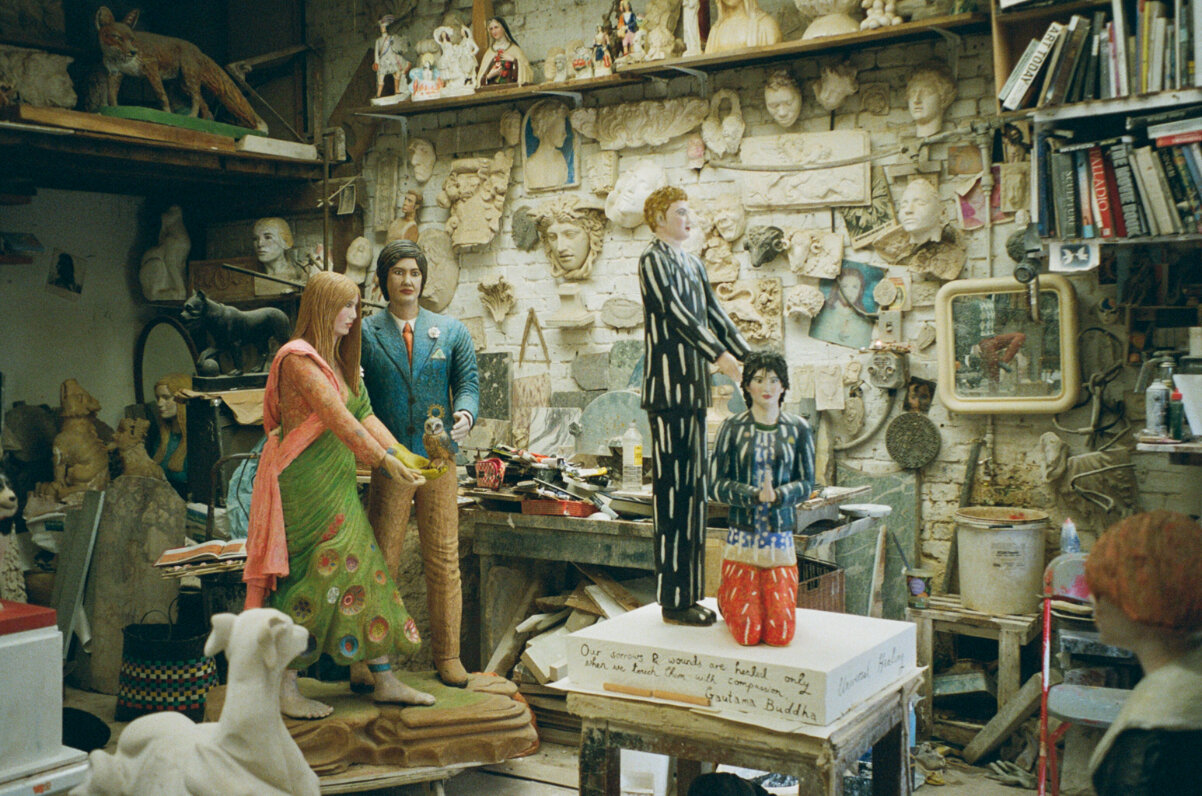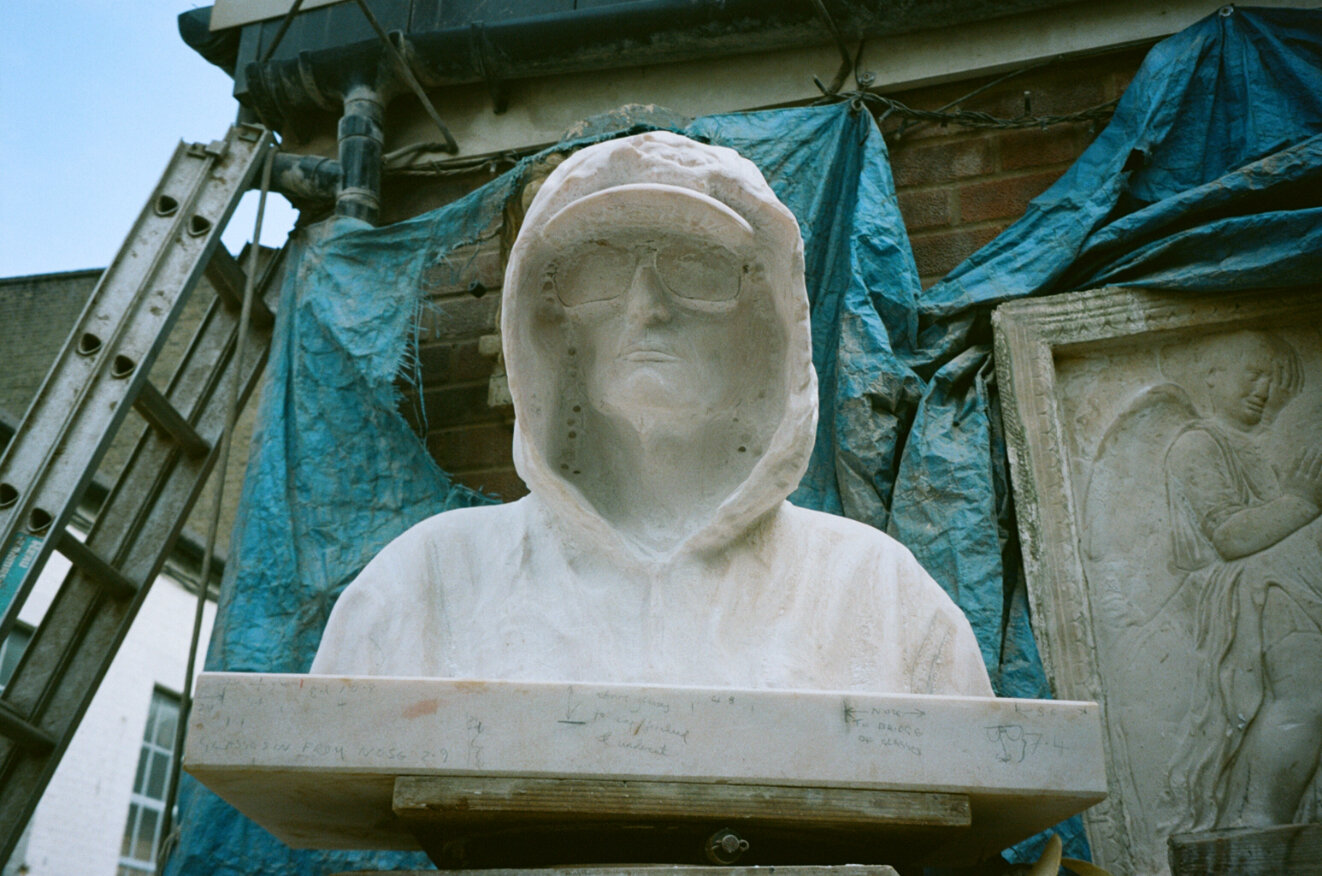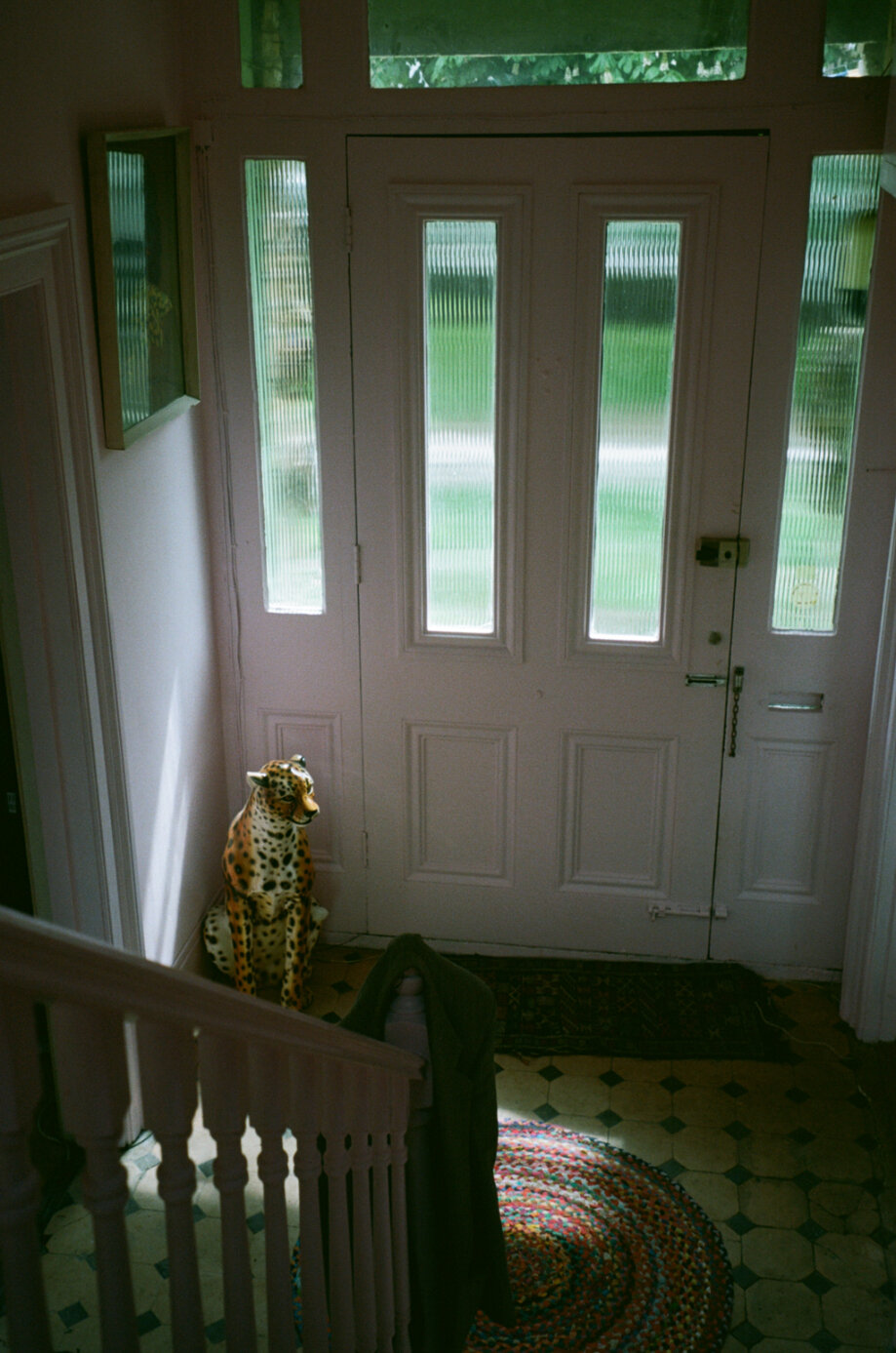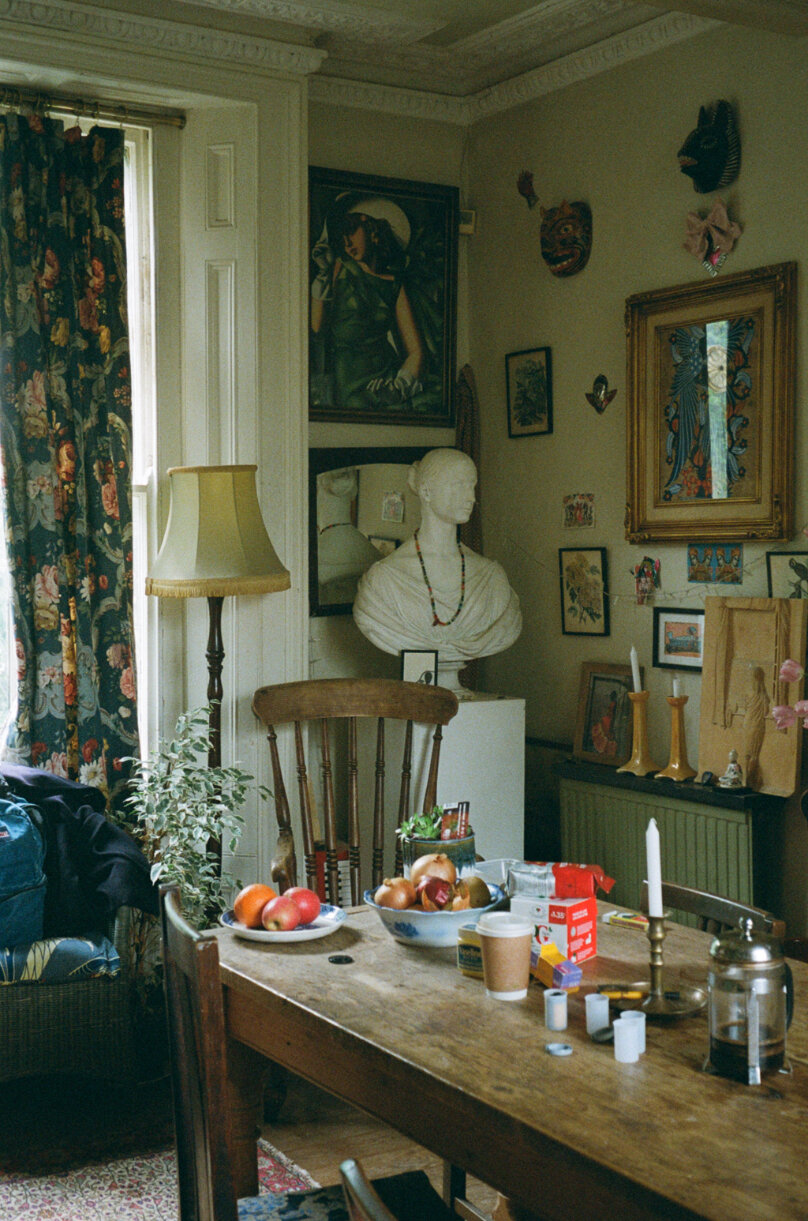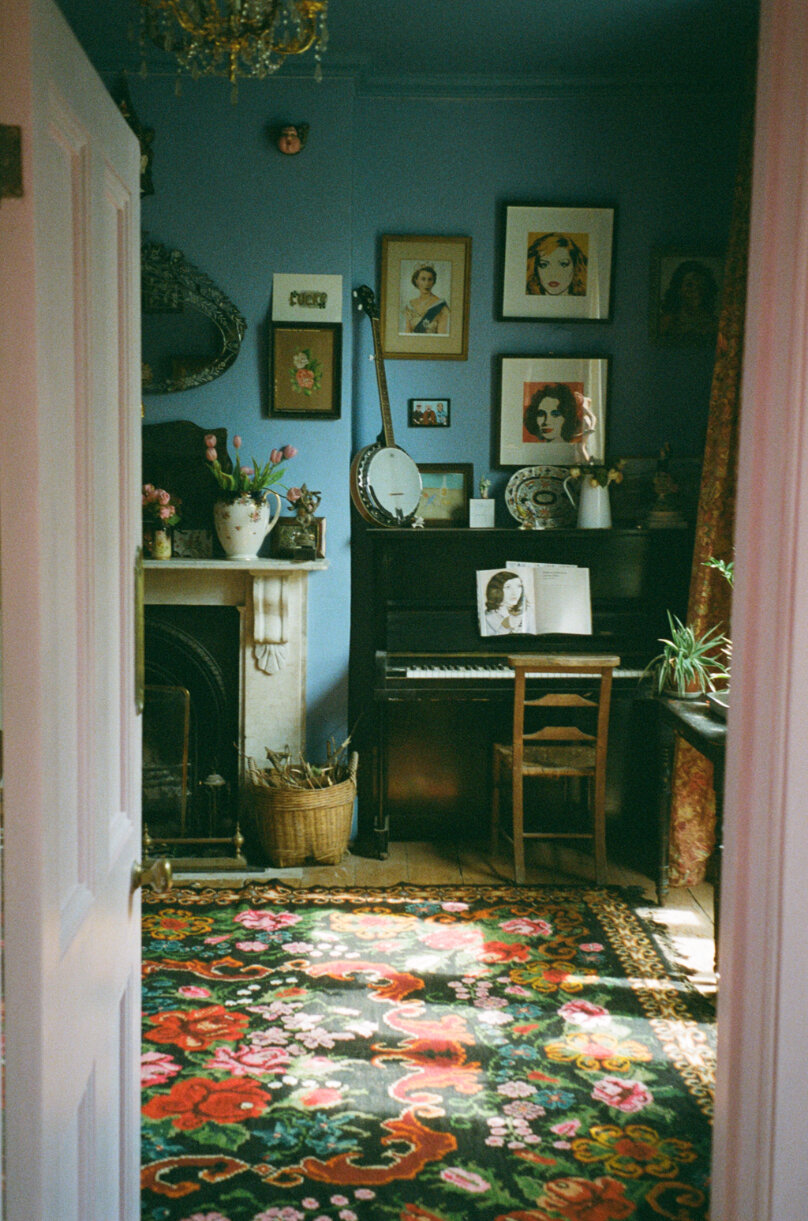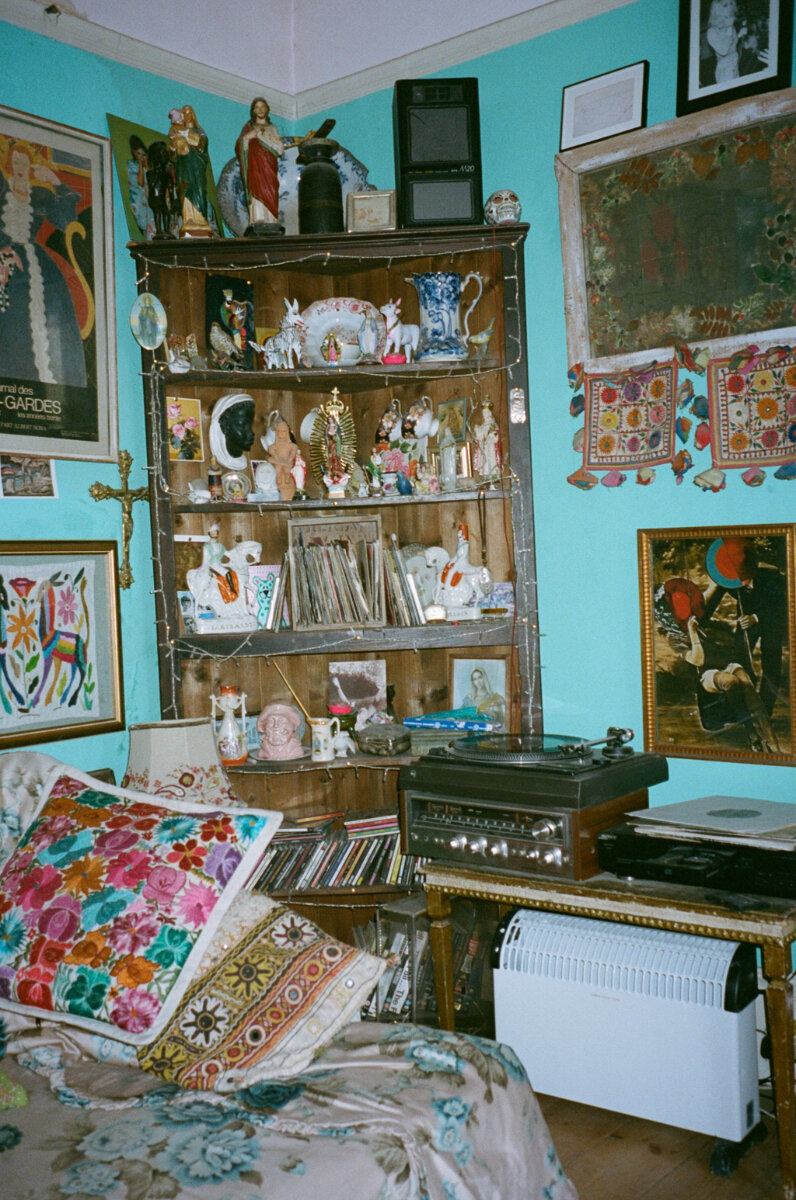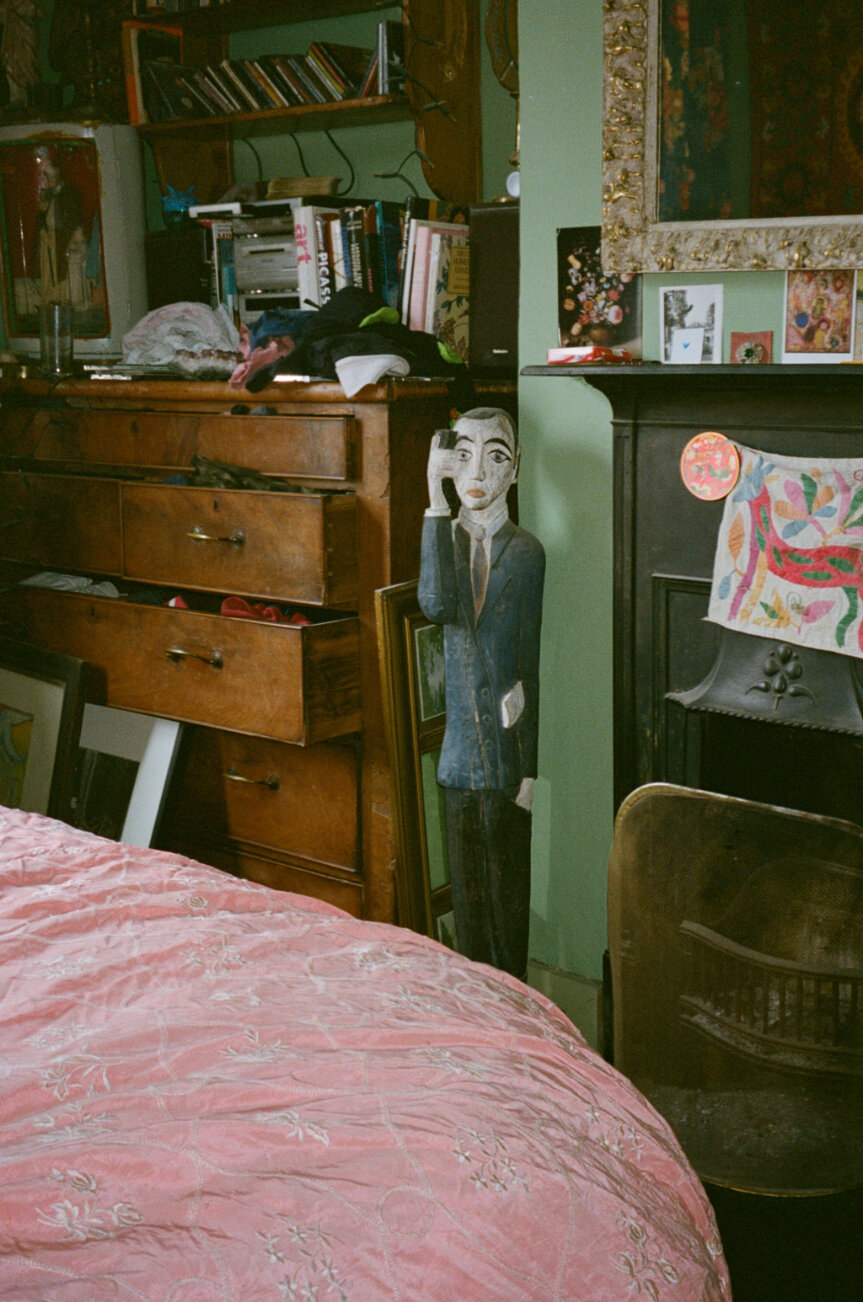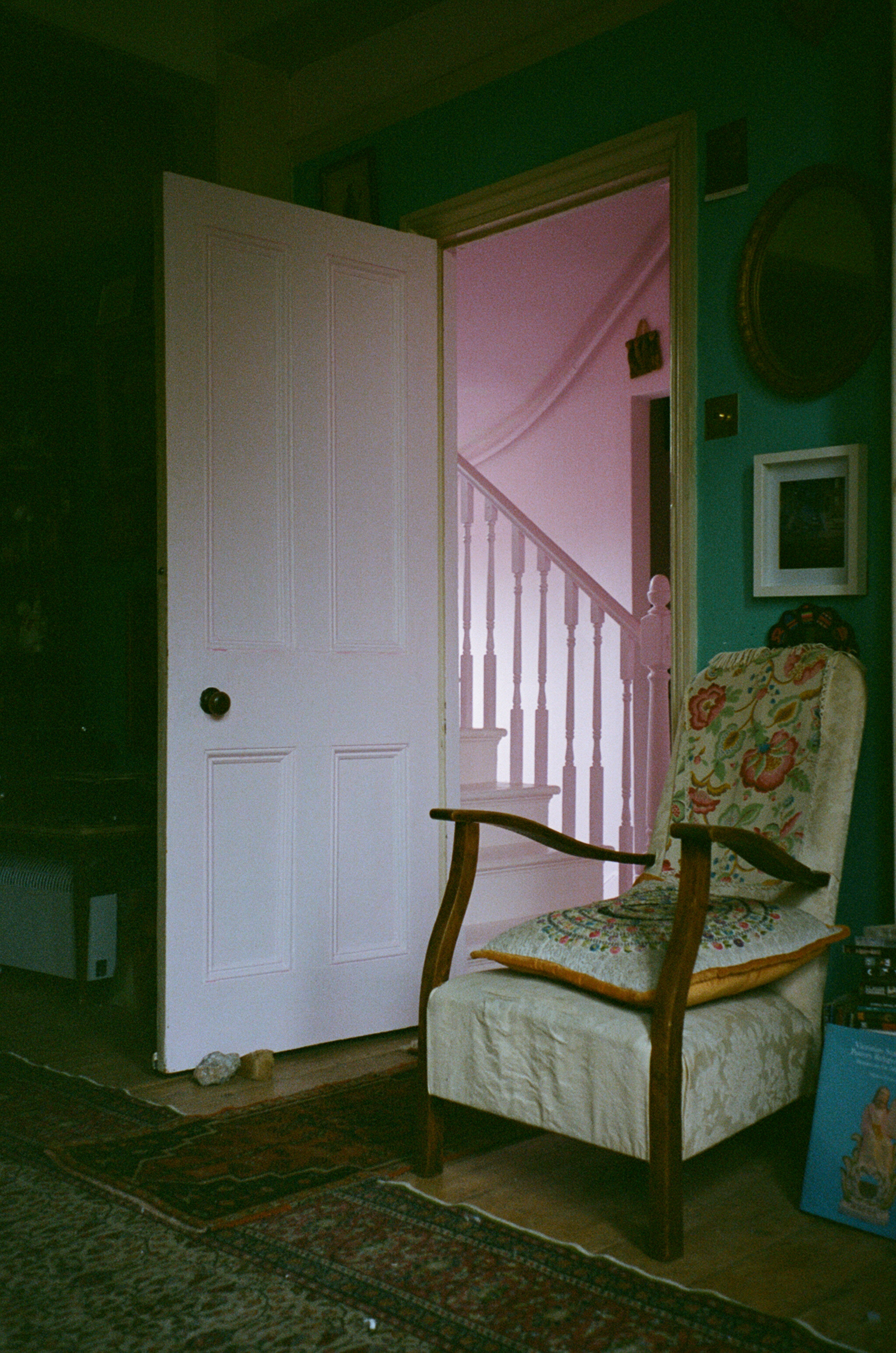interview by Lara Monro
photographs by Mattea Perrotta
Artist Corin Johnson has spent over thirty years traversing the art world with his exceptional stonemasonry and wood carving craftsmanship. Corin has collaborated with some of the world's most renowned visual artists including Paul Noble, as well as focusing on his own practice (which includes drawing, modeling, and unique stone, marble, and wood carvings), the work is varied with a unique and colorful story behind each piece. Recently, he has found himself locked down in his studio with the musically-acclaimed Nick Cave. They met in the ‘90s when the musician reached out having seen a bust of himself created by Johnson; a commission by a Cave fanatic. During lockdown, the duo have formed a creative bond and partnership.
Confident with his craft, there aren't many materials Johnson hasn't mastered; marble, resin, wood, and ceramics, to name a few. His creations range in both size and style as do his commissions: from large-scale marble portraits and restoration projects that include the Clarkson Memorial, a celebration of Thomas Clarkson, a central figure in the campaign against the slave trade in the British Empire, to salvaging intricate antique tiles. His own projects include kitsch porcelain bird sculptures and a wood carving of his beautifully large and shaggy sheepdog, Charlie.
Growing up, Corin was introduced to the Spiritualist Church through his Grandmother. His interaction with mediums was informative as he recalls members of the congregation foreseeing his future working as a sculptor. While he no longer follows the Church, his fascination with Parapsychology has been hugely informative in both his personal and professional life. Regular Zoom meetings with mediums and guided meditations leave him with strong symbolic imagery, which help to harness his spiritual and creative growth. Johnson’s effortless eccentricity is encapsulated by all of his unique philosophies and ideologies, and perhaps exaggerated by his love for different stones and the varying qualities and powers they hold (he often finds different types in his jacket pockets).
Situated in South London’s Camberwell, Corin’s home and studio, both within a 5 minute walk of one another, are evident displays of his personality. Inviting Autre to document both, we explored the art works sporadically placed in his pink entrance hallway, blue sitting room with solitary piano and kitchen, where opera music plays and tea mugs with cold coffee from yesterday are set amongst Mexican Masks he picked up on his travels in Oaxaca. Every now and then, faint sounds of the painter decorator upstairs are heard over the radio as Corin speaks about his relatively unknown practice and love for collaboration with others. To accompany the interview, Autre partnered with the American visual artist, Mattea Perrotta, who documented the interview with her film camera.
LARA MONRO: Did you jump straight into sculpting and stone carving from school?
CORIN JOHNSON: I left school and didn't want to do an arts foundation course. I wanted to learn the skills and not just the theory; to understand how to be a good draftsman and how to create sculpture. I actually went to a career centre and they said to me that someone had been looking for sculptor apprentices. They set up a meeting and I went to work for them. I still use them to source my materials today. It is here that I met Faith Tolkien, the granddaughter of J. R.R Tolkien. While I already had a bit of experience with stone carving, she taught me so much more. The sculptor, Michael Black introduced me to Faith. He also became a mentor of sorts when it came to my sculpting career. He created the big empress head sculptures around the Bodleian Library and worked with lots of weird and wonderful metals. One of my first sculpture jobs was working with a woman called Rachel Shorter. She had transitioned from a man to a woman. Before she went through the change, Rachel had been a stone carver. She had a huge amount of knowledge around the craft. It was hard back then to be taught the sculpture skills. She really showed me the ropes. She had a basement where she made dresses for dolls. It was a pretty niche and unique experience. She would occasionally lace my food with a bit of magic mushroom.
MONRO: How long have you been in London?
JOHNSON: I've been here for a long time, about thirty years — mainly in the South. I used to be in Kennington. My first place was in Russell Square, a nice squat. It's all very posh now but it was more rough and ready then. Near Great Ormond Street. I went to art college in Kennington.
MONRO: Who did you start out working with when you took on stone masonry and artist collaborations?
JOHNSON: I used to work with a guy called John Buckley who did these mad sharks coming out of roofs — he does mad pieces. Skellington lovers is one of his new ones: a smashed up old barn in the middle of the countryside. It is a cool thing to come across.
MONRO: You seem to work with a number of varied materials. Which is the main one you find yourself regularly returning to?
JOHNSON: I always seem to return to stone.
MONRO: You work with a lot of other artists. How do you separate your practice with the collaborations?
JOHNSON: I find it organic. I love working with different people and ideas. I find it a bit boring having one idea. I like the collaboration and how it provokes and develops ideas and visions. Each project is my project too — I always put my heart and soul into it. I’ve worked with Paul Noble on a number of series. His turds, for example, were for the Turner Prize. He came to me with the idea and had made some maquettes that we changed and developed a little bit. I work with clay, wood, resin, anything really — a bit of bronze here and there. I see it as a form, rather than the material. I do love stone and marble. I enjoy natural materials and wax. I do quite a lot of mold making as well.
MONRO: Do you find it difficult going between mediums say stone and marble and then wax or wood? Do you have to switch your brain to different modes for the varied materials you work with?
JOHNSON: A little bit. It takes a while to get into the flow of working with a certain medium, I guess. To get good at it, it takes a day or two sometimes to get back into the flow. I find that with stone — you work away at it and suddenly the flow is there. It just clicks and almost feels like it does the work itself.
MONRO: Do you find it a cathartic process?
JOHNSON: Yes, but like anything, it has its highs and lows.
MONRO: Over the years you have worked on an abundance of projects and collaborated with a number of artists and institutions. Can you tell me a bit about where your work has taken you and who you have worked with?
JOHNSON: I spent time on Indian reservations, worked and lived with sculptors in Africa, California, taught at a sculpture school in China and London, and worked amongst some of the best Italian marble sculptors in Italy (Pietra Santa) to produce sculptures with Paul Noble. The project with Paul was for Gagosian Gallery and nominated for the Turner prize. I also worked to make a huge limewood meditation tree for Ibrahim El-Salahi for Somerset House a couple of years back. I also used to work with the top letter carver / calligrapher called Richard Kindersley. What I learnt with him stuck and I ended up doing the memorial for the Labour prime minister, Harold Wilson, for Westminster Abbey and worked as part of a team of three on Lady Diana’s memorials at Althorp. I have worked very successfully with the Architect Peter Inskip on very classical projects for many wonderful grand houses. I have done quite a few animal projects, a huge, red stone fox outside a museum near Lewis, a pair of Ounces in Country Derry and a pair of Yale’s for St John’s College Cambridge (I also did a series of about 8 gargoyles for them).
I have also worked with Nick Cave. I designed and sculpted the infamous Nick Cave Warracknabeal Equestrian Monument Marquette. This was meant to be placed in his hometown. It was shown in a few exhibitions.
MONRO: How do the collaborations come about? They seem very organic.
JOHNSON: With Ibrahim El-Salahi, I was showing with Vigo Gallery, doing a series of kitsch granny statues of birds in block marble. They knew I was in an exhibition with Marcus Harvey — he was curating a show and asked me to do a piece, at Kings Place, so I did a massive wood carving for that and they saw the work and asked if I’d work with Ibrahim. With Paul Noble, he put the word around for marble sculptures and came to my studio. Then Nick came about because a guy I was living with asked me to do a wooden head of Nick. He was growing weed and his best mate was a huge Cave fan. He commissioned me to do this head and somehow Nick saw it. He found my dad's number, called him, put me in touch, and we met.
MONRO: I read that you and Nick met in a club?
JOHNSON: I met him one night in a club. I was with a girlfriend and we had had a bit of a tiff. This guy came up behind me and said, “Corin, do you want a drink?” He invited us to his table and that’s when he first talked about doing the horse sculpture.
MONRO: You have been working with Nick at your studio over lockdown?
JOHNSON: Yes, on a ceramics project! He first came to the studio to make work for his online store, Cave Things, then we started experimenting, and our creative collaboration began to grow organically.
MONRO: Where do you get your material from?
JOHNSON: From all over! Sometimes I buy the wood green or at timbre yards, or other sculptors will give me material. The one with the couple was given to me. The marble I use is from Italy, usually. The ones I did with Paul were from there — we travelled together to Italy and chose the pink stone. I’m doing another big pink marble piece at the moment actually. Made a cat for Susie Cave recently for her fashion label.
MONRO: Your house is filled with beautiful art and trinkets. Can you tell me a bit about where they have come from?
JOHNSON: I was lucky enough to meet an artist called Peter Snow when I moved to London. He was a painter, professor of art at the Slade, and a set designer for theatre: he did the first Waiting for Godot with Beckett and he introduced me to lots of wonderful artists including Craigie Aitchison, who I collaborated with. I have drawings by Euan Uglow, Georgina Starr, Paul Noble, paintings by James Johnston (ex bad seeds musician), Harry Pye, Rudolph Valentino, and John Buckley.
MONRO: What do you think of the art world?
JOHNSON: Generally, I don't find it that easy to be a part of. There seems to be a lot of politics, but I can't complain too much. I have worked with some of the biggest blue chip Galleries and it has always been enjoyable. The collaborations have been good, but your talent isn't necessarily nurtured unless you are selling. The money-driven, commercial side is quite tough. I would be keen to work within the arts more, if I can, as my own entity! It would be nice to dip my toe in!
MONRO: You were introduced to the Spiritualist Church by your Grandmother. Would you say that your interaction with this alternative faith has influenced your work?
JOHNSON: Yes, I definitely think I have taken much from Spiritualism and that it has influenced my work, kind of like the healer sculpture. However, I wouldn’t call myself a Spiritualist. More accurately I would say I have always been interested in Parapsychology; always looking into different faiths such as Buddhism, Sufism and reading about different esoteric teachers like Gurdjieff, Paramahansa Yogananda, Paul Brunton, as well as reading about things like cases of people remembering a previous incarnation or learning about tribal beliefs about things like ‘Dreamtime’ exploring and ancestor spirits, such as American-Indian beliefs.
I think the more moral (following the teachings of Jesus) side of being brought up with Spiritualism might have encouraged me and fed into some of my public work, like the statue of St. Andrew for Exeter College Oxford, the two statues of Christian martyrs on the front of Westminster Abbey, and the panel for Wisbech of Thomas Clarkson.
MONRO: What are you working on at the moment?
JOHNSON: I am currently working on several projects, including another collaboration with Edmund de Waal and am assisting Nick on the ceramic sculpture project I mentioned before. I have also done six studies of Grace Jones that are in her private collection. I am a judge for QEST that is the Queen’s charity for supporting artists, makers and people who want support starting up with interesting careers. I recently produced a series of multi-colored marble birds (including a pair of budgies, a goldfinch and a magpie with an egg) that were inspired by old-fashioned granny ceramics (Beswick birds). These were mainly shown with Vigo Gallery. I also recently created a limestone hare, which is currently with Messums Gallery.



